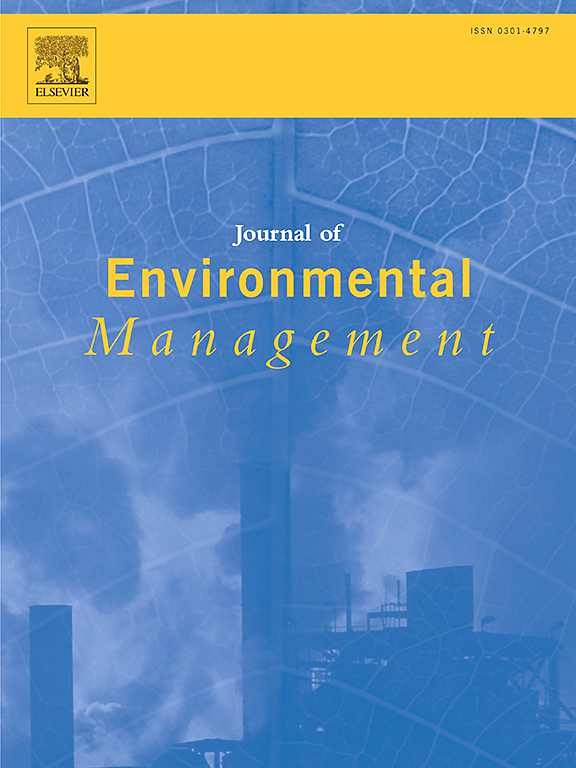需求不确定性下具有可持续性和鲁棒性的电动汽车电池回收再制造供应链网络设计
IF 8.4
2区 环境科学与生态学
Q1 ENVIRONMENTAL SCIENCES
引用次数: 0
摘要
随着人们对新能源汽车的接受,电动汽车的快速增长与电池回收行业的新生阶段之间出现了脱节。针对可持续发展的要求,本文提出了一个综合经济、环境和社会维度的多目标模型,设计了一个可持续的电动汽车电池产业闭环供应链网络。此外,采用弹性策略,提出了一种包含条件风险值(FRS-CVaR)的模糊鲁棒随机模型,以增强供应链网络的整体弹性和鲁棒性。为了求解该模型,采用初始化策略提高初始解的质量,采用自适应进化策略在保持种群多样性的同时加速收敛,采用精英保留策略避免劣等区域,构建了改进的NSGA-II模型。分别使用Gurobi、NSGA-II和改进的NSGA-II求解确定性模型和FRS-CVaR模型。与NSGA-II相比,改进的NSGA-II算法在Hypervolume (HV)度量上分别增加了40%和22%,而Spacing值分别减少了27%和52%。结果表明,改进后的NSGA-II收敛速度更快,性能优越。研究结果表明,所提出的模型可以作为一个有效的工具来设计一个基于决策者偏好的可持续的、健壮的供应链网络。结果和分析总结了在供应链网络中平衡稳健性和可持续性以及调整具有不同回收率和材料回收率或未来前景的产品的供应链的管理见解。本文章由计算机程序翻译,如有差异,请以英文原文为准。
An electric vehicle battery recycling and remanufacturing supply chain network design with sustainability and robustness under demand uncertainty
With the acceptance of new energy vehicles, there is a disconnect between the rapid growth of electric vehicles and the nascent phase of the battery recycling industry. In response to sustainable development, this paper presents a multi-objective model integrating economic, environmental, and social dimensions to design a sustainable closed-loop supply chain network for the electric vehicle battery industry. In addition, a resilient strategy is applied, and a Fuzzy Robust Stochastic model incorporating Conditional Value at Risk (FRS-CVaR) is proposed to enhance the overall resilience and robustness of the supply chain network. To solve the proposed model, an improved NSGA-II is developed by applying an initialization strategy to enhance the quality of initial solutions, incorporating an adaptive evolutionary strategy to accelerate convergence while maintaining population diversity, and use elite retention strategy to avoid inferior regions. The deterministic model and the FRS-CVaR model are solved using Gurobi, NSGA-II, and the improved NSGA-II, respectively. The improved NSGA-II algorithm achieves a 40 % and 22 % increase in the Hypervolume (HV) metric, while Spacing values are reduced by 27 % and 52 %, respectively, compared to NSGA-II. The results demonstrate that the improved NSGA-II converges faster and exhibits superior performance. Study findings show that the proposed model can be applied as an efficient tool for designing a sustainable, robust supply chain network based on decision makers' preferences. The results and analysis conclude with management insights on balancing robustness and sustainability in the supply chain network and adjusting the supply chain for products with different recycling rates and material recovery rates or future prospects.
求助全文
通过发布文献求助,成功后即可免费获取论文全文。
去求助
来源期刊

Journal of Environmental Management
环境科学-环境科学
CiteScore
13.70
自引率
5.70%
发文量
2477
审稿时长
84 days
期刊介绍:
The Journal of Environmental Management is a journal for the publication of peer reviewed, original research for all aspects of management and the managed use of the environment, both natural and man-made.Critical review articles are also welcome; submission of these is strongly encouraged.
 求助内容:
求助内容: 应助结果提醒方式:
应助结果提醒方式:


